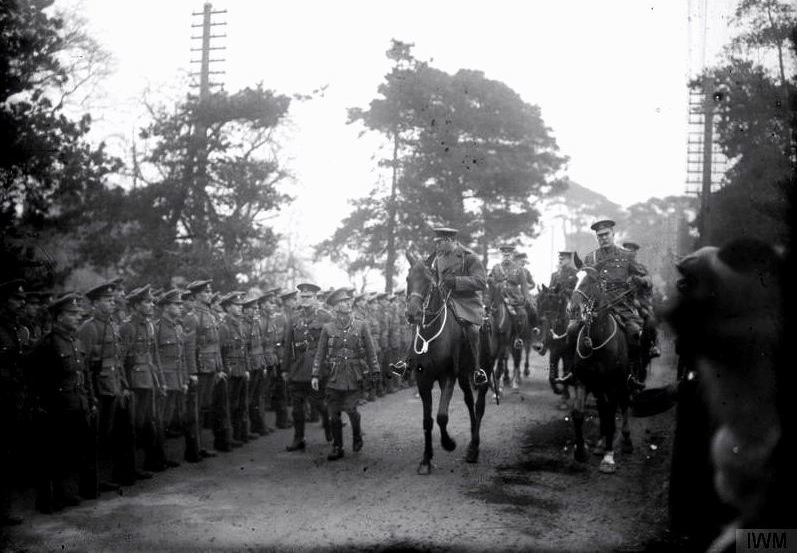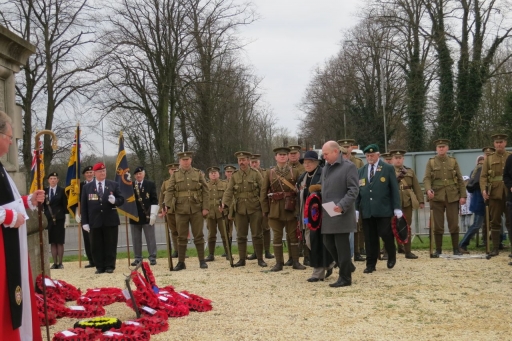A ceremony has been held in the heart of England to mark the 100th anniversary of an event which would have ranked among the most remarkable local sights of the First World War.
On March 12th 1915, King George V took the salute on horseback as some 16,000 soldiers paraded along a road near the small Warwickshire village of Stretton-on-Dunsmore.
The men of the British Army’s newly-formed 29th Division were demonstrating their readiness for war, shortly before they sailed to join the Gallipoli campaign.
Just over a century later, on March 15th 2015, representatives of the regiments involved and several descendants of those soldiers took part in a commemorative service to remember their forebears, and the many who never returned.
They gathered at the monument to the 1915 ceremony, which was unveiled at a crossroads in 1921 and now stands on a busy traffic island.
The service, organised by the Gallipoli Association and Rugby Borough Council, was conducted by the Bishop of Warwick, the Rt. Rev. John Stroyan.
 King George V inspecting the 29th Division, Dunchurch, Warwickshire (Photo: © IWM Q 69476)
King George V inspecting the 29th Division, Dunchurch, Warwickshire (Photo: © IWM Q 69476)
In 1915, George V was cheered by a modest crowd of about 1,000 local people; the visit had not been announced because of wartime censorship.
Writing about the centenary event, Lyn Edmonds of the Gallipoli Association, notes: “The difficulties of holding a commemorative service on a busy road traffic island meant that the service was limited to approximately 100 attendees by invitation only and could not be widely publicised – a striking parallel with 1915.”
The soldiers of the 29th Division fought their way ashore at Cape Helles on April 25th 1915, the opening day of the Gallipoli landings.
By the end of the First World War, the Division had suffered 94,000 casualties and won 27 Victoria Crosses, 12 of them at Gallipoli. It became known as the ‘Immortal 29th Division.’
For the full story, read the article by Lyn Edmonds on our features page.
Source: The Gallipoli Association
Images courtesy of Keith Edmonds (wreath laying); Imperial War Museum (King George V) © IWM Q 69476
Posted by: Peter Alhadeff, Centenary News
